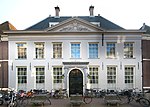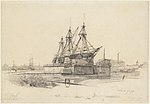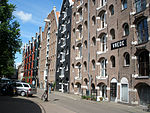TV Rain

TV Rain (Russian: Дождь, tr. Dozhd, IPA: [ˈdoʂtʲ] ; stylized as ДО///ДЬ) is an independent Russian television channel. Launched in 2010, it has been based in the Netherlands since 2023. It focuses on news, discussions, culture, politics, business reports, and documentaries. TV Rain is owned by journalist Natalya Sindeyeva. Its slogan is "Optimistic Channel."In March 2022, Russian authorities blocked access to TV Rain in response to its coverage of the Russian invasion of Ukraine. The channel relaunched from studios in Latvia in July, but after multiple violations had its license cancelled in December. TV Rain continued to broadcast via YouTube and received a Dutch broadcast license in January 2023.
Excerpt from the Wikipedia article TV Rain (License: CC BY-SA 3.0, Authors, Images).TV Rain
Westerdok, Amsterdam Centrum
Geographical coordinates (GPS) Address Nearby Places Show on map
Geographical coordinates (GPS)
| Latitude | Longitude |
|---|---|
| N 52.384 ° | E 4.8916944444444 ° |
Address
Westerdok 244
1013 BH Amsterdam, Centrum
North Holland, Netherlands
Open on Google Maps











